History of the Department of Ophthalmology
The recent developments in the Department of Ophthalmology are a logical extension of an illustrious history.
The State University of New York (SUNY) Downstate Medical Center has a rich tradition in medical education and clinical care. Its origins date back to 1860 when the Long Island College Hospital became the first medical school in the United States to include bedside teaching in the curriculum. The school was renamed the Long Island College of Medicine when it became independent in 1930, and in 1950 the school became part of the State University of New York system.
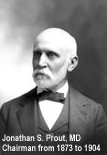
The Division of Ophthalmology started in a formal way in 1873 with the appointment of Dr. Jonathan S. Prout as lecturer. However, it was not until 1885 that Dr. Prout was appointed ophthalmic surgeon on the staff of the Long Island College Hospital. The chair of clinical ophthalmology was officially created in 1886, and Dr. Prout filled that position. Dr. Prout's era is notably one in which every endeavor was made to give the medical student an intimate contact with clinical material. A national figure in his day, Dr. Prout was also known for his custom of giving informal lectures with a patient present. The subject of the lecture was determined by the disease from which the patient suffered. He remained chair of the department until he became Emeritus Professor in 1904.
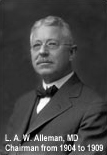
During the course of the same year, Dr. L.A.W. Alleman was appointed chair. During his tenure, teaching took on a more formal structure. The value of recording data was appreciated and instrumentation was developing. Dr. Henry Mitchell Smith played an important role in providing outstanding help and support to Dr. Alleman. Together, they were able to develop well-planned courses for the students. Didactic lectures were presented to the third-year students, and students received assignments in the dispensary, where cases were demonstrated. Dr. Alleman served as chair until 1909.
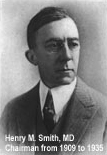
In 1909, Dr. Henry Mitchell Smith became chair and clinical professor of diseases of the eye – a position he held until 1934. With his ascendancy, ophthalmology achieved a deserved prominence within the school and hospital. The department was represented on the faculty for the first time in 1917, after Dean Otto Hoffman took office. It is noteworthy that the Division of Ophthalmology gained an outstanding academic and clinical reputation during Dr. Smith's tenure. Dr. Smith became Emeritus Professor of Clinical Ophthalmology in 1935, at which time Dr. John Norris Evans was named to chair the department.
In 1935, Dr. John Norris Evans was tendered the chair of ophthalmology. He was followed by Dr. Walter Moehle, who served from 1950 to 1955, and then Dr. Richard C. Troutman, from 1956 to 1983.
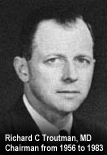
Dr. Troutman made major contributions to ophthalmic microsurgery and was one of the first ophthalmologists to perform an intraocular lens implant. His thesis for the American Ophthalmological Society was on the optics of intraocular lenses. During the same period, another major contribution was made by Dr. Austin Fink. Dr. Fink was among the first to describe the electron microscopy of the anterior chamber angle in glaucoma. He also conducted seminal work in the management of congenital cataracts.
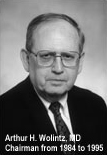
The Division of Ophthalmology became a department in 1984, during Dr. Arthur H. Wolintz's tenure. The newly established department became very successful not only in providing better patient care, but also in providing a popular and effective elective for the medical students at the institution. Dr. Wolintz succeeded in making ophthalmology recognized among other specialties at the College of Medicine. He established a solid relationship between neurology and ophthalmology, and neurosurgery and ophthalmology. He is one of the very few physicians who have achieved board certification in both neurology and ophthalmology. He also developed a popular fellowship program in neuro-ophthalmology. Dr. Wolintz has also been credited with establishing neuro-ophthalmology as a recognized subspecialty in ophthalmology. His outstanding accomplishments have not only gained him the honorable title of Distinguished Professor at the University, they also have further established ophthalmology as one of the institution's most vibrant clinical departments.
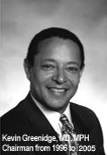
Dr. Kevin C. Greenidge began his tenure as chairman on January 15, 1996, as the eighth professor and chairman of the department. At the time of his recruitment, he was highly enthusiastic about the opportunity to develop a center of excellence in ophthalmic care in Brooklyn. Building on the foundation established by past chairs of the division and department, Dr. Greenidge added components to each of the affiliated teaching hospitals. The six teaching hospitals include Kings County Hospital Center, University Hospital at Downstate, Coney Island Hospital, the Brooklyn Veterans Administration Medical Center, Kingsbrook Jewish Medical Center, Brookdale University Hospital Center and the Long Island College Hospital. Currently each of these facilities offers subspecialty clinics managed by fellowship-trained ophthalmologists in pediatrics, glaucoma, cornea, retina, neuro-ophthalmology and oculoplastics. All of the clinic and surgical sessions are supervised directly by faculty.

Dr. Douglas Lazzaro began chairing the department in August 2005 as Interim Chairman and was appointed permanent Chairman in 2007. He remained at the helm of the Department until May 2017. Dr. Lazzaro was responsible for the complete upgrade of all diagnostic equipment at SUNY Downstate Ophthalmology's outpatient facilities. As a result of his efforts we now offer the latest imaging and other diagnostic techniques to aid in the management of the most complicated cases that present to ophthalmologists.
During Dr. Lazzaro's tenure the faculty grew with the addition of many new fellowship-trained faculty members. In addition Dr. Lazzaro was instrumental in establishing and growing a translational research component within the Department which now has four NIH and NSF funded investigators.
Finally Dr. Lazzaro's efforts expanded and strengthened the residency program at SUNY Downstate which is now one of the largest programs in the country and provides exceptional training to future leaders in the field of Ophthalmology.
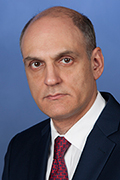
Dr. John Danias was appointed Chairman in October 2019 and is currently leading the department. As a clinician-scientist his goals are to expand the national and international reputation of Ophthalmology at SUNY Downstate in clinical care, research and training building on the current strengths of the Department. These are the diverse group of outstanding physicians that make up our faculty, the tremendous community that we serve and our commitment to excellence in providing eye care, advancing the envelope of knowledge in the field of vision and training the next generation of leaders in ophthalmology.